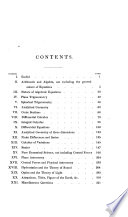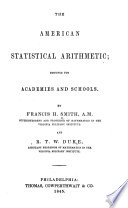 | John Martin Frederick Wright - 1825 - 798 pages
...that in the same cycloid the oscillations are isochronousTRINITY COLLEGE. 1820. HYDROSTATICS. into the depth of its centre of gravity below the surface of the fluid. 2. A hollow cone without a bottom stands on a horizontal plane, and water is poured in at the vertex.... | |
 | John Martin F. Wright - 1827 - 632 pages
...against any surface in a direction perpendicular to it, varies as the area of the surface multiplied into the depth of its centre of gravity below the surface of the fluid. 2. A hollow cone without a bottom stands on a horizontal plane, and water is poured in at the vertex.... | |
 | John Martin Frederick Wright - 1827 - 358 pages
...against any surface in a direction perpendicular to it, varies as the area of the surface multiplied into the depth of its centre of gravity below the surface of the fluid. 2. A hollow cone without a bottom stands on a horizontal plane, and water is poured in at the vertex.... | |
 | William Hallows Miller - 1831 - 124 pages
...62), or the pressure on the base of the truncated cone BAA'B' (fig. 63) ; the area of the base and the depth of its centre of gravity below the surface of the fluid being the same in each case. 118. A hollow sphere is just filled with fluid; to compare the pressure... | |
 | John Martin Frederick Wright - 1831 - 282 pages
...against any surface in a direction perpendicular to it, varies as the area of the surface multiplied into the depth of its centre of gravity below the surface of the fluid. 4. The pressure of a fluid downwards against the sides and bottom of any vessel whatever, is the weight... | |
 | 1836 - 366 pages
...of a column of fluid whose base is the area of the surface pressed, and altitude the perpendicular depth of its centre of gravity below the surface of the fluid ; and find the whole pressure on the surface of a spherical segment filled with fluid. 93. If a floating... | |
 | Francis Henney Smith - 1845 - 710 pages
...against any surfare, in a direction perpendicular to it, is as Hie ares of the Ktirfoce, multiplied into the depth of its centre of gravity below the surface of the fluid, multiplied into the specific gravity of the fluid ; and is ,". equal to the weight of a cylinder of... | |
 | Julius Ludwig Weisbach - 1847 - 664 pages
...one part of the wall of the vessel is proportional to the product of its vertical projection and td the depth of its centre of gravity below the surface of the water, consequently the horizontal pressure on a part of the wall of the vessel is exactly equal in... | |
 | Thomas Baker - 1851 - 188 pages
...weight of a column of the fluid, the base of which is the surface pressed, and the height equal to the depth of its centre of gravity below the surface of the fluid. Let the whole surface S be divided into an indefinite number of parts *, s', &c., the distances of... | |
 | Thomas Baker (C.E.) - 1851 - 176 pages
...weight of a column of the fluid, the base of which is the surface pressed, and the height equal to the depth of its centre of gravity below the surface of the fluid. Let the whole surface S be divided into an indefinite number of parts s, s', &c., the distances of... | |
| |